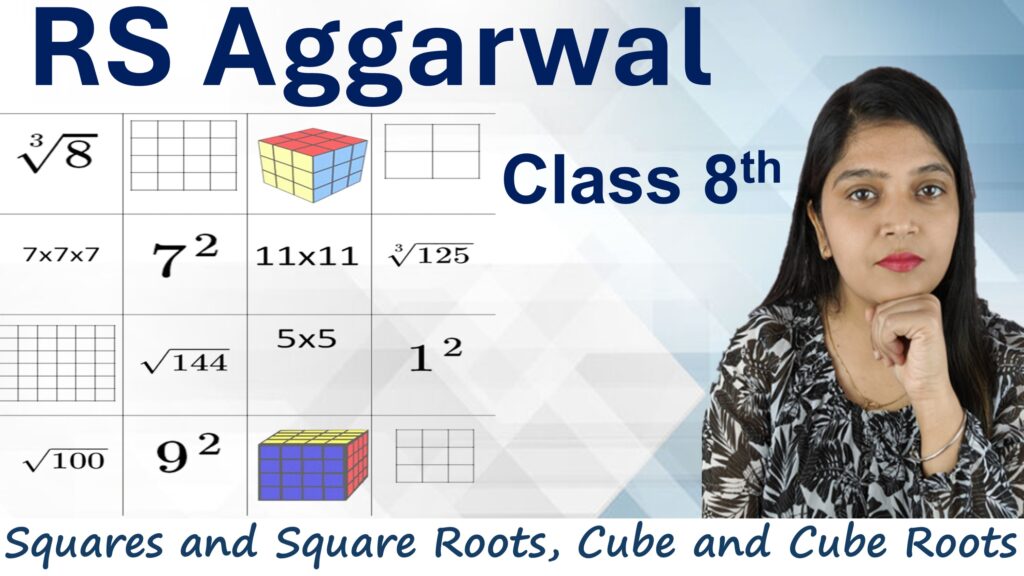Multiple Choice Type
Q1: Which is greater: 5.038 or 5.3?
Step 1: Compare the integer parts:
Both have integer part 5, so move to decimal part.
Step 2: Compare decimal parts digit-wise:
– For 5.038, decimal part starts with 0.0
– For 5.3, decimal part starts with 0.3
Since 0.3 > 0.038,
Answer: ii. 5.3 is greater.
Q2: Shyama bought 5 kg 300 g apples and 3 kg 250 g mangoes. Saria bought 4 kg 800 g oranges and 4 kg 150 g bananas. Who bought more fruits?
Step 1: Convert all weights to kilograms:
– Shyama’s apples = 5 kg 300 g = \(5 + \frac{300}{1000} = 5.3\) kg
– Shyama’s mangoes = 3 kg 250 g = \(3 + \frac{250}{1000} = 3.25\) kg
– Saria’s oranges = 4 kg 800 g = \(4 + \frac{800}{1000} = 4.8\) kg
– Saria’s bananas = 4 kg 150 g = \(4 + \frac{150}{1000} = 4.15\) kg
Step 2: Find total fruits bought by Shyama:
\[
5.3 + 3.25 = 8.55 \text{ kg}
\]Step 3: Find total fruits bought by Saria:
\[
4.8 + 4.15 = 8.95 \text{ kg}
\]Step 4: Compare totals:
\[
8.95 \text{ kg} > 8.55 \text{ kg}
\]Answer: ii. Saria bought more fruits.
Q3: Two kg of milk contains 0.315 kg of cream. The cream in 20 kg milk is:
Step 1: Given:
– Cream in 2 kg milk = 0.315 kg
Step 2: Find cream per kg of milk:
\[
\frac{0.315}{2} = 0.1575 \text{ kg cream per 1 kg milk}
\]Step 3: Find cream in 20 kg milk:
\[
0.1575 \times 20 = 3.15 \text{ kg}
\]Answer: iii. The cream in 20 kg milk is 3.15 kg (option iii).
Q4: The distance walked by a boy is 86.4 km in 4.8 hours. The distance covered by him in one hour is:
Step 1: Given:
– Total distance = 86.4 km
– Total time = 4.8 hours
Step 2: Distance covered in 1 hour = \(\frac{\text{Total distance}}{\text{Total time}}\)
\[
= \frac{86.4}{4.8} \text{ km}
\]Answer: ii. The distance covered by him in one hour is \(\frac{86.4}{4.8}\) km (option ii).
Q5: The number seven and 7 thousandth is:
Step 1: “Seven and 7 thousandth” means 7 + \(\frac{7}{1000}\).
\[
= 7 + 0.007 = 7.007
\]Answer: iv. The correct number is 7.007 (option iv).
Q6: \(56.56\div1.4\) is equal to:
Step 1: Remove decimal from divisor by multiplying both numerator and denominator by 10: \[ \frac{56.56}{1.4} = \frac{56.56 \times 10}{1.4 \times 10} = \frac{565.6}{14} \]Step 2: Divide 565.6 by 14:
40.4
────────
14 | 565.6
- 56 (14 × 4)
-----
05
-0
---
56
-56 (14 × 4)
-----
0
Step 3: Perform the division:
\(565.6 \div 14 = 40.4\)
Answer: ii. 40.4 (option ii).
Q7: \(\left(2+\frac{1}{2}\right)\div\frac{3}{5}\) is equal to:
Step 1: Convert mixed number to improper fraction:
\[
2 + \frac{1}{2} = \frac{2 \times 2 + 1}{2} = \frac{5}{2}
\]Step 2: Division by a fraction is multiplication by its reciprocal:
\[
\frac{5}{2} \div \frac{3}{5} = \frac{5}{2} \times \frac{5}{3}
\]Step 3: Multiply the fractions:
\[
= \frac{5 \times 5}{2 \times 3} = \frac{25}{6}
\]Step 4: Convert improper fraction to mixed number:
\[
\frac{25}{6} = 4 \text{ remainder } 1 = 4\frac{1}{6}
\]Answer: i. \(4\frac{1}{6}\) (option i).
Q8: Total cost of two pens at ₹5.30 each and four notebooks at ₹20.50 each is:
Step 1: Cost of one pen = ₹5.30
Cost of two pens = \( 2 \times 5.30 = ₹10.60 \)
Step 2: Cost of one notebook = ₹20.50
Cost of four notebooks = \( 4 \times 20.50 = ₹82.00 \)
Step 3: Total cost = Cost of pens + Cost of notebooks
\[
= 10.60 + 82.00 = ₹92.60
\]Answer: iii. ₹92.60 (option iii).
Q9: \(2.5+3.8\div0.02\) is equal to:
Step 1: Calculate \( \frac{3.8}{0.02} \):
3.8 ÷ 0.02 = ?
Multiply numerator and denominator by 100 to remove decimals:
= \( \frac{3.8 \times 100}{0.02 \times 100} = \frac{380}{2} \)
Now, \( 380 ÷ 2 = 190 \)
Step 2: Add 2.5 to the result:
\[
2.5 + 190 = 192.5
\]Answer: ii. 192.5 (option ii).
Q10: By what decimal number should 0.0001 be divided to get 0.01?
Step 1: Let the decimal number be \(x\). According to the question,
\[
\frac{0.0001}{x} = 0.01
\]Step 2: Multiply both sides by \(x\) and divide both sides by 0.01:
\[
0.0001 = 0.01 \times x \\
x = \frac{0.0001}{0.01}
\]Step 3: Calculate \( \frac{0.0001}{0.01} \):
Multiply numerator and denominator by 10000 to remove decimals:
\[
\frac{0.0001 \times 10000}{0.01 \times 10000} = \frac{1}{100} = 0.01
\]Answer: iv. 0.01 (option iv).
Q11: \(3\frac{1}{5}\times\left(\frac{1}{2}+\frac{3}{8}\right)\div\frac{21}{40}\) is equal to:
Step 1: Convert mixed fraction \(3\frac{1}{5}\) to improper fraction:
\[
3\frac{1}{5} = \frac{3 \times 5 + 1}{5} = \frac{16}{5}
\]Step 2: Add the fractions inside the parentheses:
\[
\frac{1}{2} + \frac{3}{8} = \frac{4}{8} + \frac{3}{8} = \frac{7}{8}
\]Step 3: Multiply \( \frac{16}{5} \times \frac{7}{8} \):
\[
\frac{16}{5} \times \frac{7}{8} = \frac{16 \times 7}{5 \times 8} = \frac{112}{40} = \frac{28}{10} = \frac{14}{5}
\]Step 4: Divide by \( \frac{21}{40} \) which is equivalent to multiplying by its reciprocal:
\[
\frac{14}{5} \div \frac{21}{40} = \frac{14}{5} \times \frac{40}{21} = \frac{14 \times 40}{5 \times 21} = \frac{560}{105}
\]Step 5: Simplify \( \frac{560}{105} \):
Divide numerator and denominator by 35:
\[
\frac{560 \div 35}{105 \div 35} = \frac{16}{3}
\]Step 6: Convert \( \frac{16}{3} \) to mixed fraction:
\[
\frac{16}{3} = 5 \frac{1}{3}
\]Answer: iii. \(5\frac{1}{3}\) (option iii).
Q12: 5.80, 0.95, 1.87 and 1.92 in descending order are:
Step 1: List the numbers: 5.80, 0.95, 1.87, 1.92
Step 2: Identify the order from greatest to smallest:
– Largest number = 5.80
– Next largest = 1.92
– Then = 1.87
– Smallest = 0.95
Step 3: Descending order is:
\[
5.80, \quad 1.92, \quad 1.87, \quad 0.95
\]Answer: ii. 5.80, 1.92, 1.87 and 0.95
Q13: \(3-\frac{1}{4}\ of\ \left(15.8-3\right)\) is equal to:
Step 1: Calculate the expression inside the parenthesis:
\[
15.8 – 3 = 12.8
\]Step 2: Find \(\frac{1}{4}\) of 12.8:
\[
\frac{1}{4} \times 12.8 = \frac{12.8}{4} = 3.2
\]Step 3: Subtract this value from 3:
\[
3 – 3.2 = -0.2
\]Answer: iii. -0.2
Q14: Statement 1: \(0.05=0.050=0.005=0.00500\)
Statement 2: Any number of zeros put at the end (i.e. on the right side) of a decimal number does not change its value.
Which of the following options is correct?
Explanation:
– \(0.05\) and \(0.050\) are equal because trailing zeros after the decimal point do not change the value.
– \(0.05 \neq 0.005\) because \(0.005\) is one-tenth of \(0.05\).
– Similarly, \(0.005 = 0.00500\), so trailing zeros after decimal digits don’t change the value.
Thus, Statement 1 is false because it equates \(0.05\) and \(0.005\), which are not equal.
– Statement 2 is true because adding zeros to the right of the decimal part does not change the value.
Answer: iv. Statement 1 is false, and statement 2 is true.
Q15: Assertion (A): Representation of 6.25 as a vulgar fraction is \(6\frac{1}{4}\).
Reason (R): A fraction is said to be a vulgar fraction if the denominator is a whole number but not of the form \({10}^n,\ n\in N\).
Explanation:
– \(6.25 = 6 + 0.25 = 6 + \frac{25}{100} = 6 + \frac{1}{4} = 6\frac{1}{4}\), so Assertion (A) is true.
– A vulgar fraction is a fraction where numerator and denominator are integers and denominator is other than 10, 100, 1000 etc. So, Reason (R) is true.
Answer: iii. Both A and R is true.
Q16: Assertion (A): If the product of two decimal numbers is 17.55 and one of them is 6.5, then other one is 2.7.
Reason (R): In division of decimal numbers, the dividend is always exactly divisible and no remainder is left after certain steps. Also quotient is always reduced to a terminating decimal.
Explanation:
– To find the other number:
\[
\text{Other number} = \frac{17.55}{6.5} = 2.7
\]
So, Assertion (A) is true.
– Reason (R) states that division of decimal numbers always results in terminating decimals and exact division without remainder, which is not always true. For example, \(\frac{1}{3} = 0.333…\) is a non-terminating decimal. Also, remainder may not always become zero in decimal division, leading to repeating decimals. So Reason (R) is false.
Answer: i. A is true, R is false.
Q17: Assertion (A): \(3.10\div\left(0.1\times0.1\right)=3.1\).
Reason (R): In division of a decimal number by \({10}^n,\ n\in N\), shift the decimal point to the right by as many digits equivalent to n in the power of 10 in the divisor.
Explanation:
Step 1: Calculate the divisor \(0.1 \times 0.1\):
\[
0.1 \times 0.1 = 0.01
\]Step 2: Divide \(3.10\) by \(0.01\):
\[
3.10 \div 0.01 = 3.10 \times 100 = 310
\]
(When dividing by \(0.01 = 10^{-2}\), shift decimal point 2 places right)
Therefore,
\[
3.10 \div (0.1 \times 0.1) = 310 \neq 3.1
\]So, Assertion (A) is false.
Step 3: Reason (R) is correct because dividing by \(10^n\) shifts the decimal point \(n\) places right.
So, Reason (R) is true.
Answer: ii. A is false, R is true.
Q18: Assertion (A): 9, 9.56, 9.2, 9.005 are all unlike decimals, hence addition operations can’t be performed.
Reason (R): A whole number can also be expressed as a decimal number by putting a decimal after its unit’s digit and after it as many zeroes required to perform addition operations with other like or unlike decimal numbers.
Explanation:
Step 1: The numbers given are 9, 9.56, 9.2, and 9.005. These are unlike decimals because they have different numbers of digits after the decimal point.
Step 2: However, addition can be performed by converting all numbers to have the same number of decimal places by adding zeros.
For example:
\[
9 = 9.000, \quad 9.2 = 9.200, \quad 9.56 = 9.560, \quad 9.005 = 9.005
\]Now they are like decimals and addition can be performed.
Step 3: Therefore, Assertion (A) is false because addition can be performed.
Step 4: Reason (R) is true because a whole number can be written as a decimal with zeros to match decimal places.
Answer: ii. A is false, R is true.







Leave a Comment